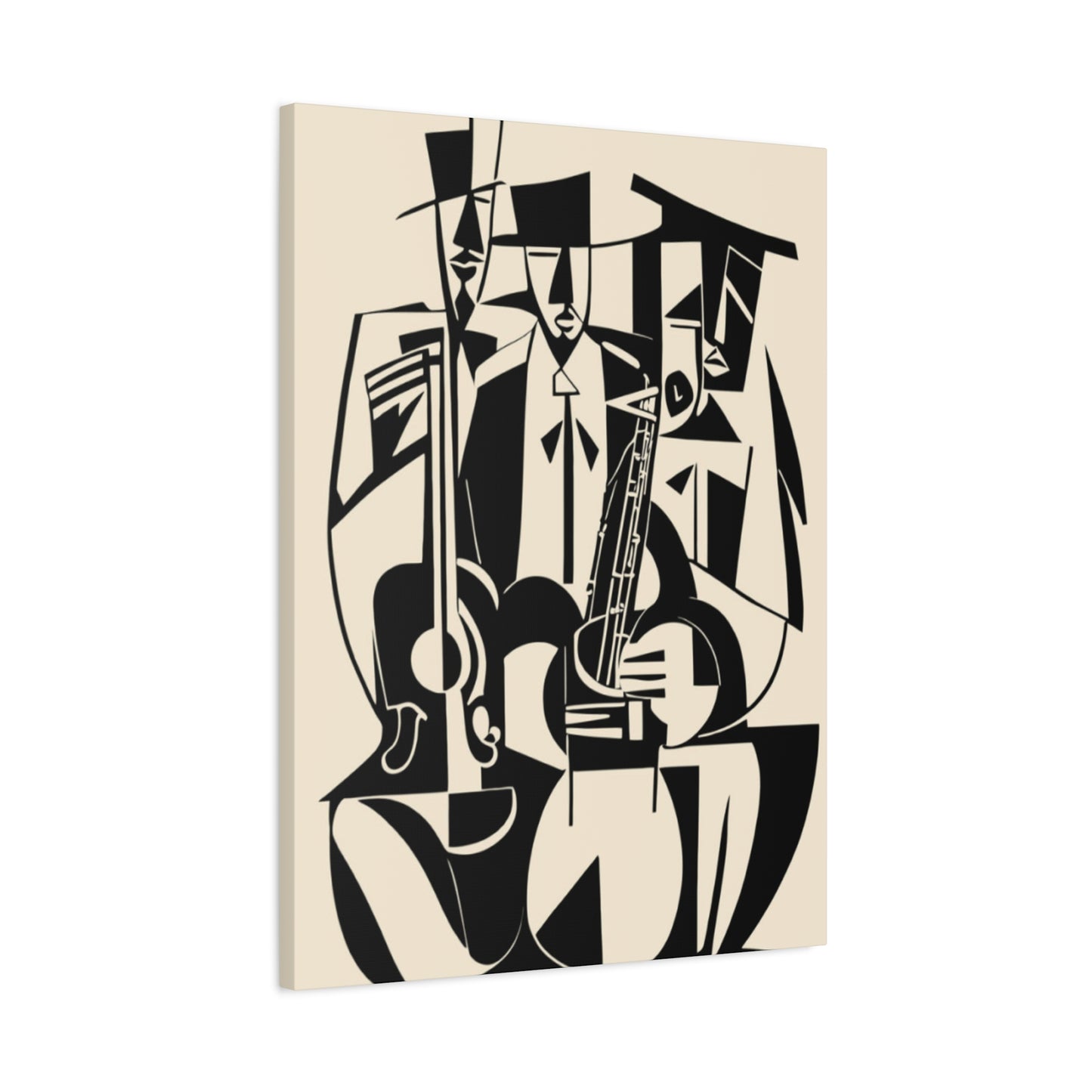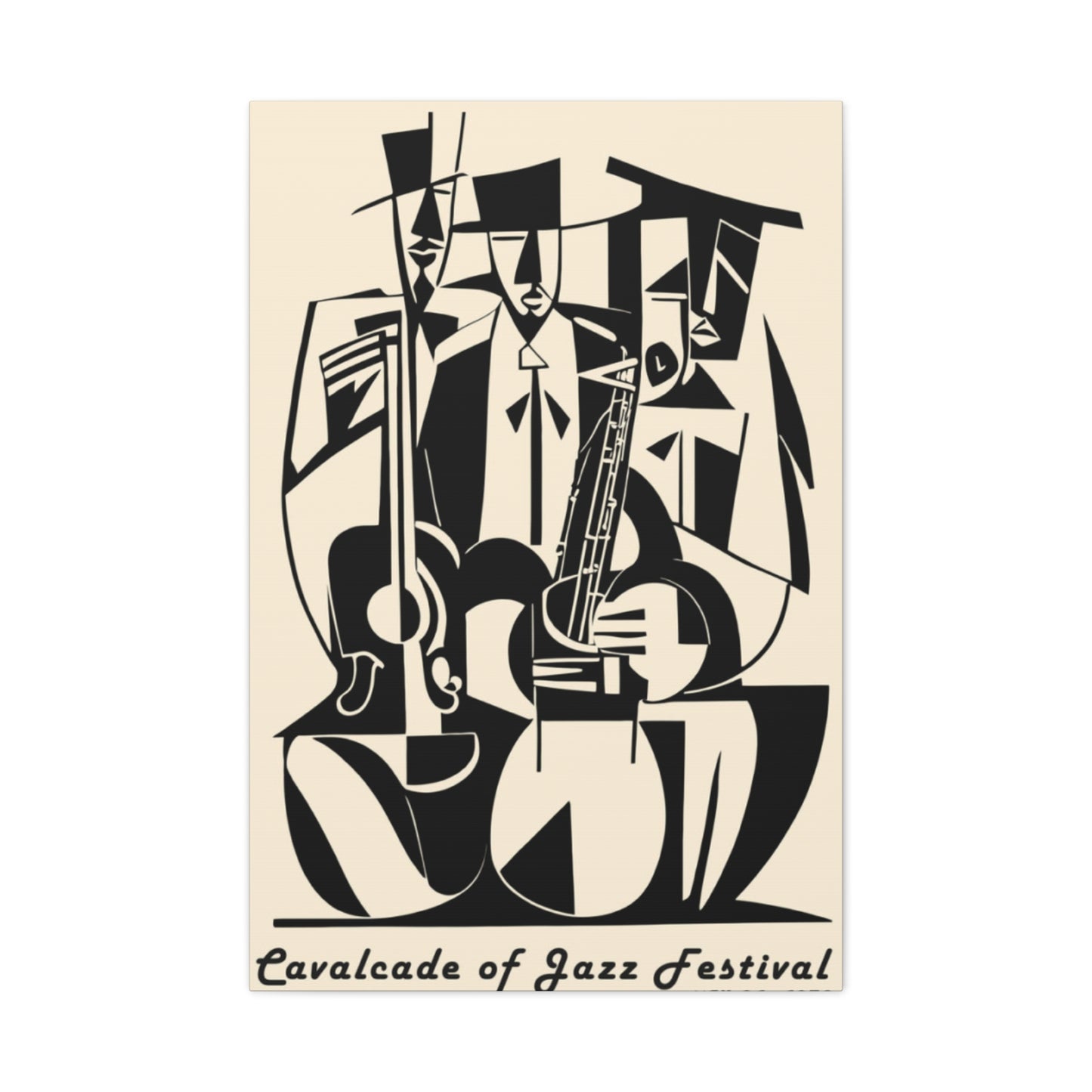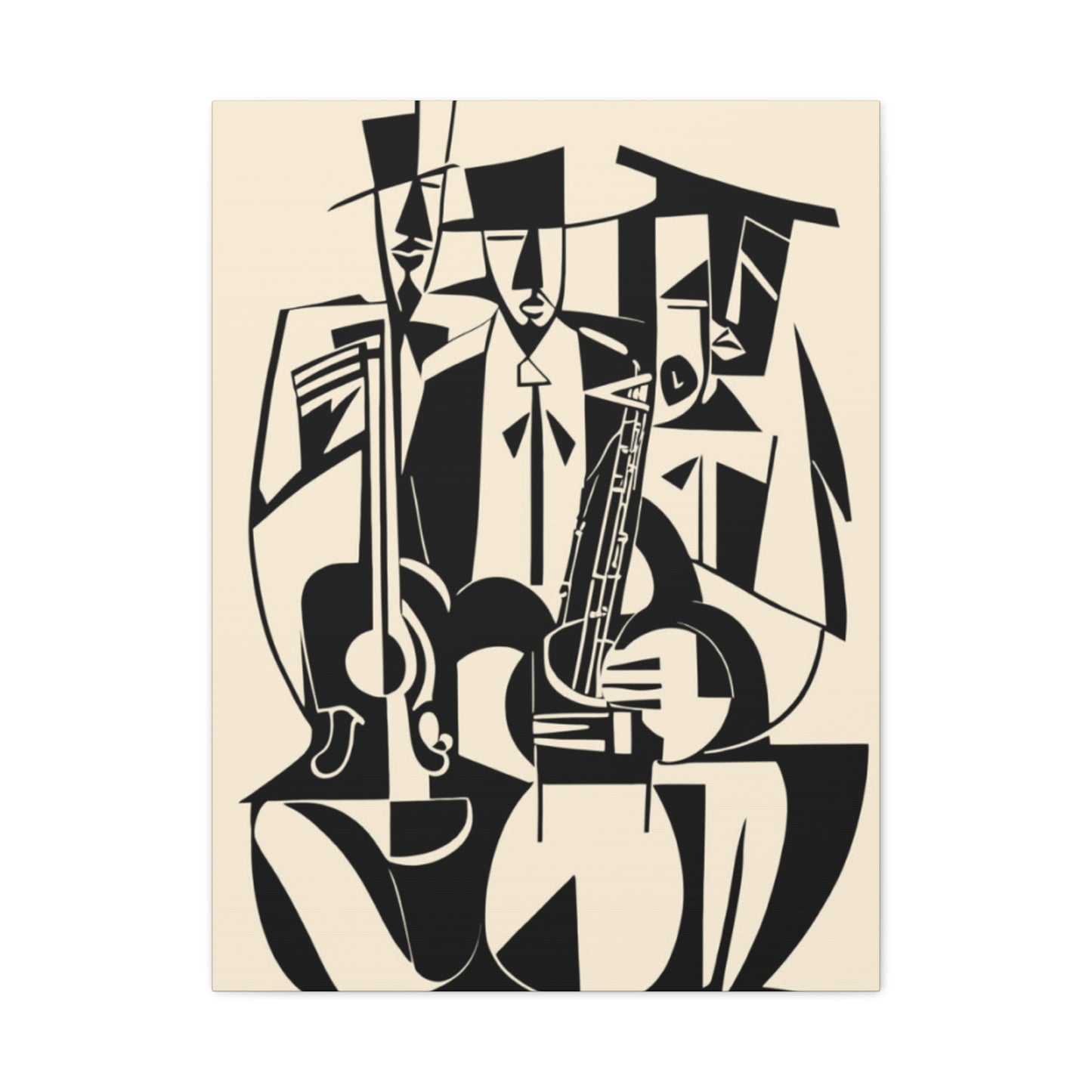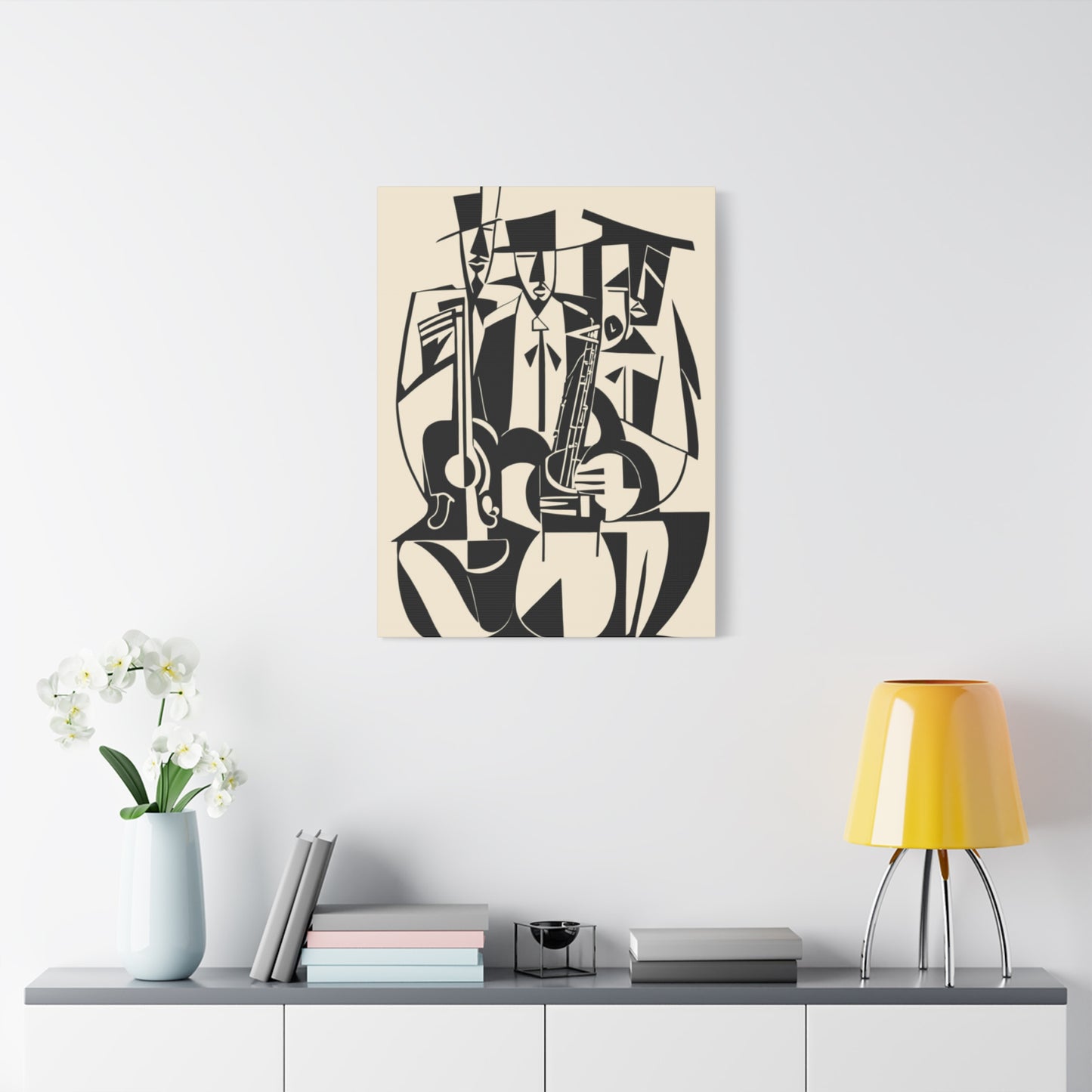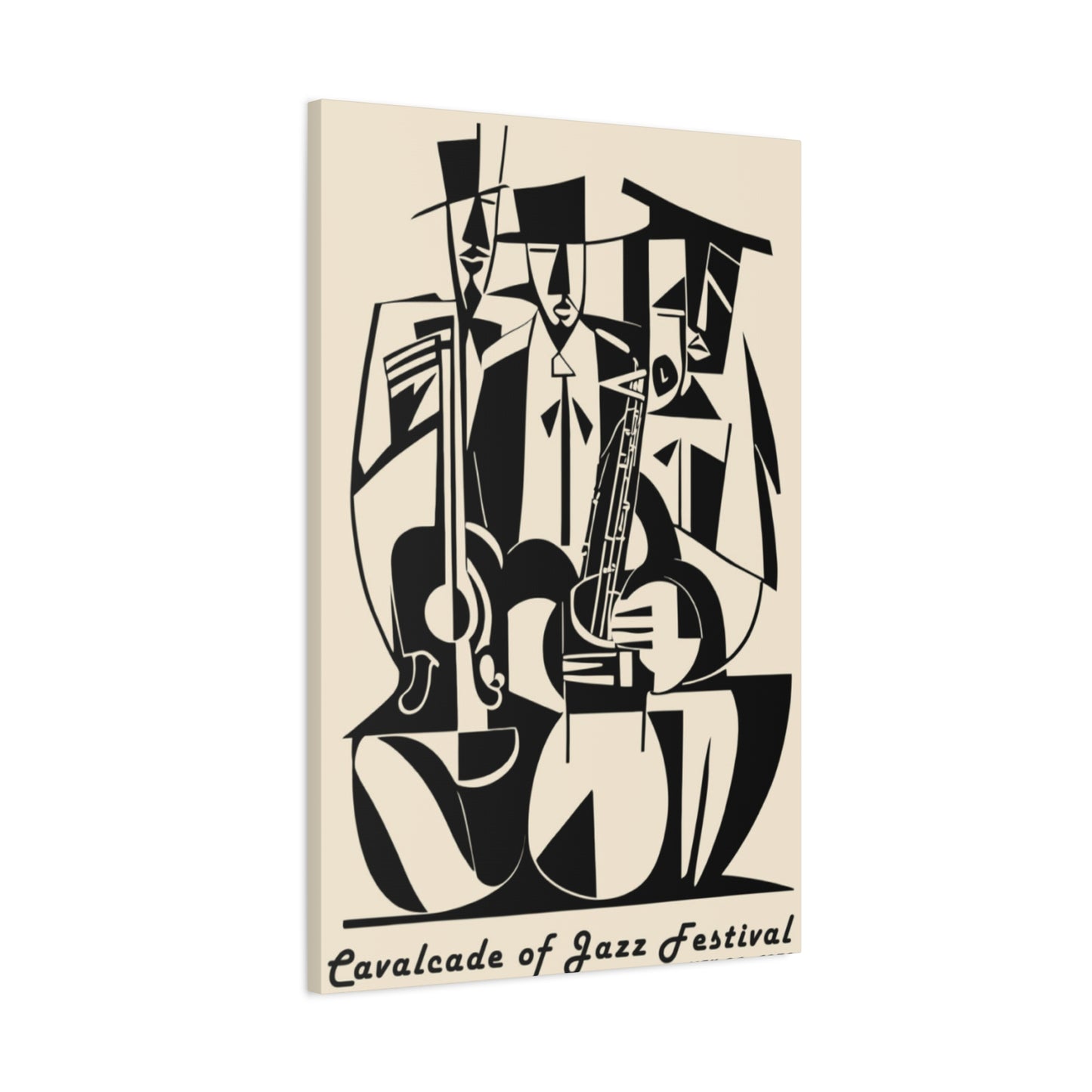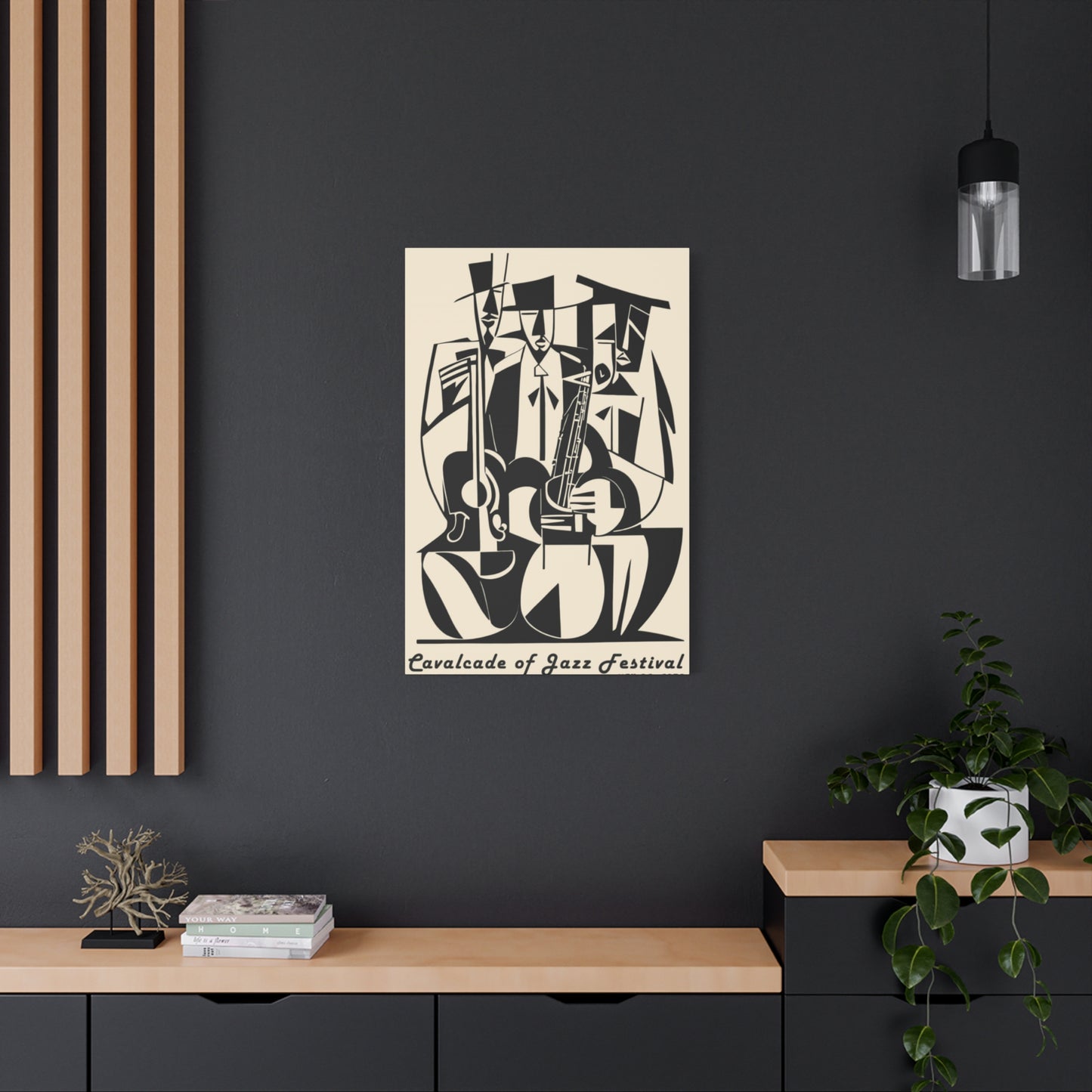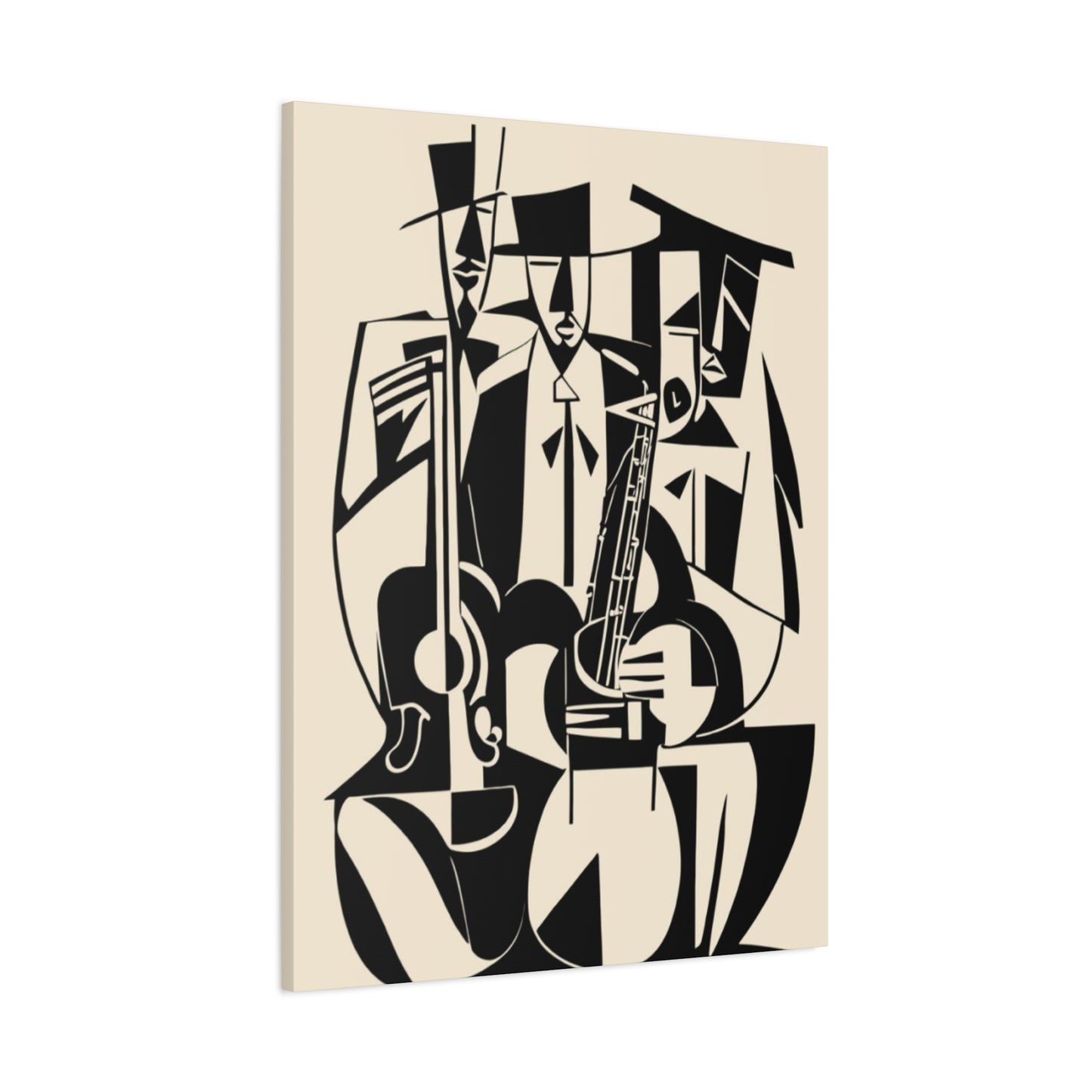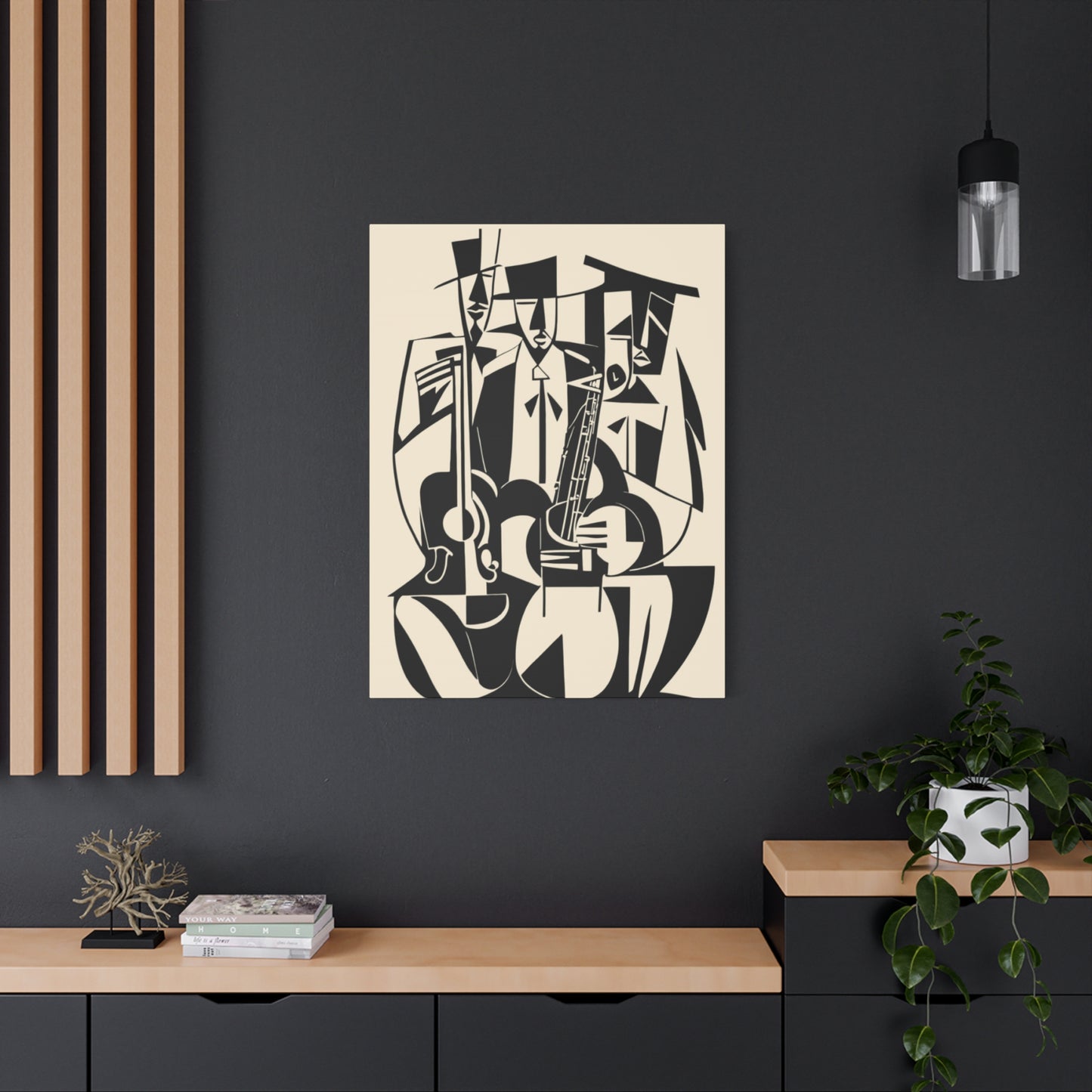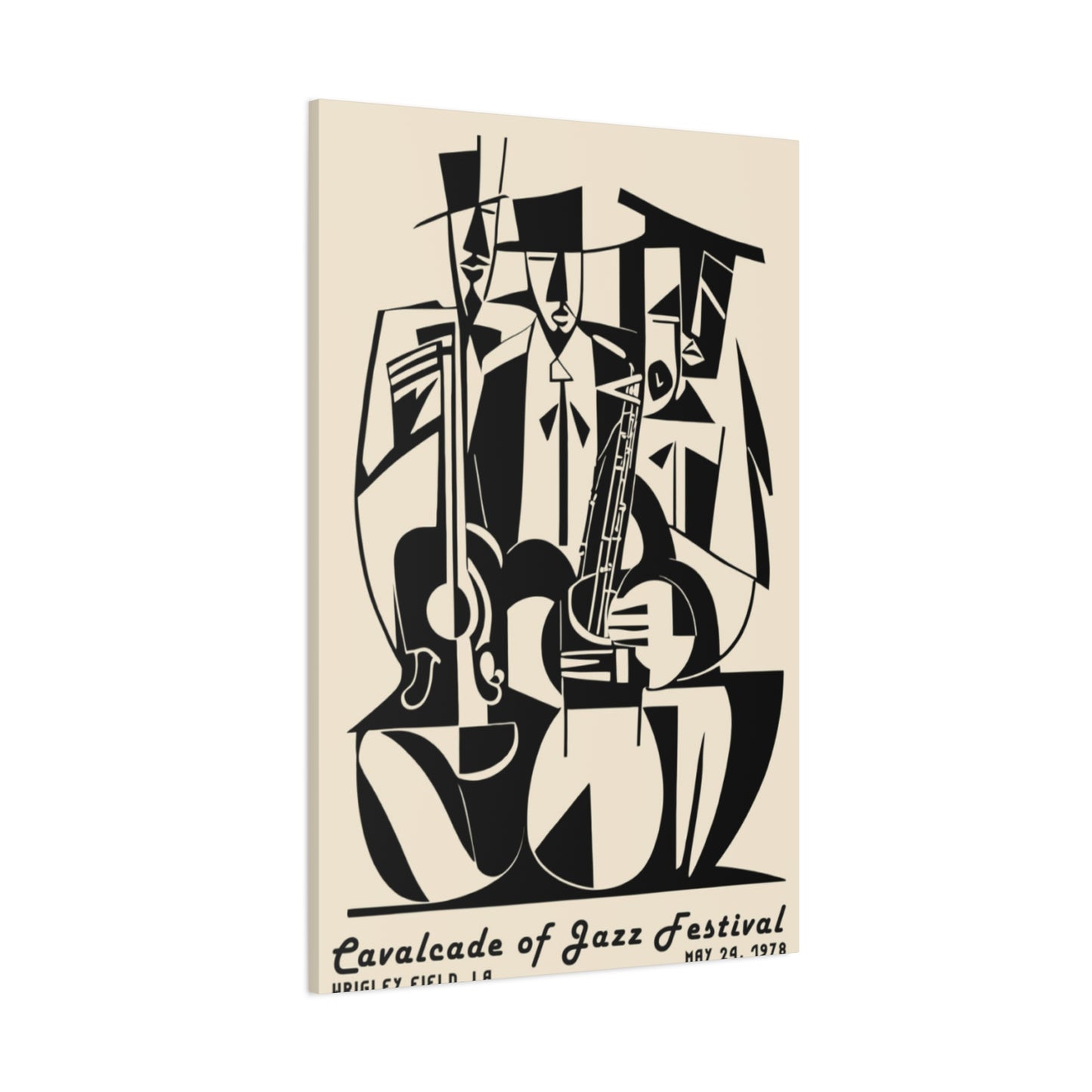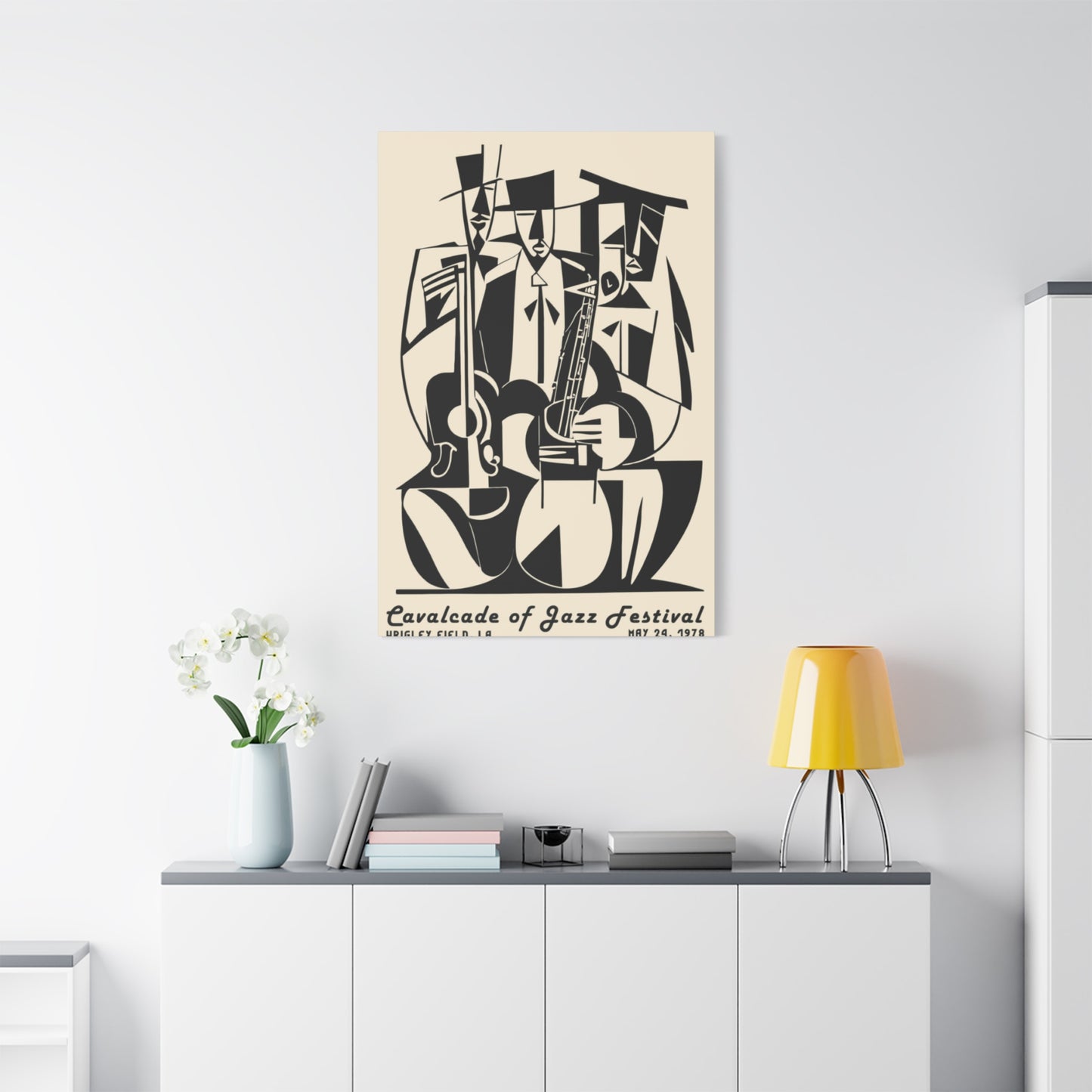Jazz Festival Graffiti Wall Art: Rhythmic Street Expression for Modern Homes
The fusion of musical rhythm and urban artistry creates a powerful visual language that speaks to contemporary audiences. Jazz festival graffiti wall art represents more than mere decoration; it embodies the spontaneous energy of street culture merged with the sophisticated improvisation of America's most influential musical genre. This artistic movement captures the essence of live performance, transforming static surfaces into dynamic expressions of cultural celebration.
Contemporary homes increasingly seek authentic artistic expressions that reflect personal taste and cultural appreciation. The marriage between jazz aesthetics and graffiti techniques offers homeowners an opportunity to incorporate both musical heritage and urban creativity into their living environments. These artworks serve as conversation starters, mood enhancers, and cultural bridges that connect different artistic traditions.
The appeal of jazz festival graffiti extends beyond traditional art collectors to music enthusiasts, urban culture aficionados, and anyone seeking to inject personality into their surroundings. This art form celebrates the rebellious spirit of both jazz musicians who challenged conventional musical boundaries and street artists who reclaimed public spaces for creative expression.
Historical Foundations of Jazz and Street Art Movement
The relationship between jazz music and visual art dates back to the early twentieth century when both movements emerged as forms of cultural rebellion. Jazz originated in African American communities, challenging established musical conventions through improvisation and rhythmic innovation. Similarly, graffiti art emerged as a means of personal expression in urban environments, allowing artists to communicate outside traditional gallery systems.
During the Harlem Renaissance, visual artists began incorporating jazz themes into their work, recognizing the music's revolutionary impact on American culture. This period established the foundation for future artistic collaborations between musicians and visual artists. The spontaneous nature of jazz improvisation found visual parallels in abstract expressionist techniques, creating a shared aesthetic language.
The 1970s and 1980s witnessed the emergence of hip-hop culture, where graffiti artists often worked closely with musicians, creating visual identities for emerging artists. This collaboration established precedents for contemporary jazz festival graffiti art, where musical energy translates into vibrant visual expressions. The connection between rhythm and color, melody and line work, became increasingly apparent as artists explored these relationships.
Street art's evolution from vandalism to recognized art form mirrors jazz music's journey from underground clubs to concert halls. Both art forms maintained their rebellious edge while gaining mainstream acceptance. This transformation allowed artists to explore jazz themes through graffiti techniques without losing authenticity or cultural significance.
The democratization of both art forms contributed to their widespread appeal. Jazz festivals became inclusive celebrations where diverse audiences could experience music together, while street art made visual expression accessible to communities previously excluded from traditional art venues. This accessibility became central to jazz festival graffiti's philosophy of bringing art directly to people's homes.
Contemporary Jazz Festival Culture and Visual Identity
Modern jazz festivals represent more than musical events; they function as cultural celebrations that encompass visual arts, fashion, food, and community engagement. Festival organizers increasingly recognize the importance of visual identity in creating memorable experiences that extend beyond musical performances. Jazz festival graffiti wall art emerges from this intersection of music and visual culture.
Festival atmospheres combine spontaneous musical moments with carefully curated visual elements. Stage designs, promotional materials, and venue decorations all contribute to an immersive experience that festival attendees want to recreate in their personal environments. Graffiti-style artwork captures this festival energy, allowing people to maintain connections to these transformative cultural experiences.
The social media age has amplified the visual component of festival culture. Attendees share images that showcase not only performances but also the aesthetic environment surrounding the music. Jazz festival graffiti wall art responds to this visual hunger by providing Instagram-worthy backdrops that reflect personal taste and cultural engagement.
Contemporary jazz festivals embrace diversity in both musical programming and artistic expression. This inclusivity creates space for graffiti artists to interpret jazz themes through urban art techniques, resulting in fusion pieces that speak to multiple cultural traditions. The artwork becomes a visual representation of cultural mixing that defines modern jazz festivals.
Festival merchandise has evolved beyond traditional t-shirts and posters to include sophisticated artistic collaborations. Limited edition prints, canvas works, and custom pieces allow festival-goers to own unique artworks that commemorate their experiences. Jazz festival graffiti wall art extends this concept, providing ongoing access to festival energy within domestic environments.
Artistic Techniques in Jazz-Inspired Graffiti Creation
Creating effective jazz festival graffiti requires understanding both musical structure and visual composition. Artists must translate auditory experiences into visual elements, considering how musical concepts like rhythm, harmony, and improvisation can be expressed through color, line, and form. This translation process demands technical skill and cultural sensitivity.
Color palettes in jazz graffiti often reflect the emotional range of the music itself. Warm tones might represent the intimate atmosphere of small jazz clubs, while cooler colors could evoke late-night performances or melancholic ballads. Artists frequently employ color progressions that mirror musical scales or chord progressions, creating visual harmonies that complement the musical themes.
Lettering styles in jazz graffiti combine traditional graffiti typography with elements that suggest musical notation. Letters might flow like melodic lines or stack like harmonic structures. Some artists incorporate actual musical symbols into their letterforms, creating hybrid designs that function as both text and musical reference.
Spray painting techniques allow for effects that mirror musical qualities. Graduated colors can suggest the sustain of a trumpet note, while sharp color contrasts might represent percussive elements. Artists often use stencils to create repeated motifs that echo musical refrains or develop techniques that allow for controlled "accidents" similar to jazz improvisation.
Mixed media approaches combine traditional graffiti materials with other artistic elements. Artists might incorporate actual vinyl records, sheet music fragments, or instrument silhouettes into their compositions. These additions create textural variety and direct references to jazz culture that enhance the artwork's authenticity and visual interest.
Digital tools increasingly support traditional techniques, allowing artists to plan compositions, experiment with color combinations, and create preparatory studies. However, the spontaneous quality essential to both jazz and graffiti requires artists to maintain improvisational elements in their final executions, ensuring that planned elements don't overwhelm the artwork's organic energy.
Music Visualization Through Urban Art Mediums
The challenge of representing sound through visual means has occupied artists throughout history. Jazz festival graffiti addresses this challenge by employing urban art techniques that emphasize movement, energy, and spontaneity. These qualities naturally align with jazz music's improvisational character, creating opportunities for authentic artistic interpretation.
Artists develop personal vocabularies for representing different musical elements. Curved lines might represent saxophone melodies, while angular shapes could suggest piano chords or drum rhythms. Color intensity often correlates with musical dynamics, creating visual compositions that suggest the ebb and flow of live performance.
Abstract approaches allow artists greater freedom in musical interpretation, focusing on emotional and energetic qualities rather than literal representation. These works might capture the feeling of being immersed in festival crowds, the excitement of discovering new musicians, or the nostalgic atmosphere of classic jazz venues.
Figurative elements often appear in jazz graffiti, including silhouettes of musicians, instruments, or festival scenes. These recognizable images anchor abstract elements, providing viewers with clear connections to jazz culture while allowing for creative interpretation of musical themes.
Typography plays a crucial role in music visualization, with artist signatures, song titles, or musician names becoming integral compositional elements. These textual components might be rendered in styles that suggest musical qualities, such as flowing script that mirrors melodic lines or bold block letters that represent rhythmic emphasis.
Environmental factors influence how music visualization develops within graffiti contexts. Outdoor murals might incorporate weather effects or urban textures that wouldn't appear in studio work, adding authenticity and site-specific character. These environmental elements become part of the artwork's musical interpretation, suggesting the real-world contexts where jazz is experienced.
Color Theory Applications in Musical Artwork
Color selection in jazz festival graffiti involves more than aesthetic preference; it requires understanding how colors can represent musical concepts and emotional states. Artists draw upon established color theory while developing personal systems for musical representation. This approach creates artworks that function on multiple sensory levels.
Warm color families often represent the intimate, social aspects of jazz culture. Reds, oranges, and yellows might suggest the warmth of small venues, the energy of live performance, or the passion of musical expression. These colors create inviting atmospheres that mirror the welcoming nature of jazz communities.
Cool colors can represent the sophisticated, contemplative aspects of jazz music. Blues, purples, and greens might suggest late-night performances, urban sophistication, or the meditative quality of extended improvisations. These colors add depth and complexity to compositions while maintaining visual appeal.
Contrast relationships between colors create visual rhythms that parallel musical structures. High contrast combinations might represent the tension and resolution found in jazz harmonies, while subtle gradations could suggest smooth melodic progressions. Artists manipulate these relationships to create visual compositions that feel musically informed.
Monochromatic approaches focus attention on form, composition, and texture rather than color relationships. These works might use various shades of blue to create "Blue Note" inspired pieces, or employ sepia tones to suggest vintage jazz photography. Monochromatic works often feel more sophisticated and gallery-ready while maintaining graffiti techniques.
Fluorescent and metallic colors add contemporary elements that distinguish festival graffiti from traditional jazz artwork. These modern materials reflect current urban art practices while creating visual effects that suggest stage lighting, electronic elements in contemporary jazz, or the high-energy atmosphere of large festivals.
Color progression within individual pieces can mirror musical development, with compositions that begin with simple color statements and develop into complex harmonic relationships. This approach creates artworks that reward extended viewing, revealing new relationships and details that mirror the complexity of jazz compositions.
Typography and Lettering in Street Art Jazz Themes
Lettering serves multiple functions in jazz festival graffiti, providing textual information while contributing to overall visual composition. Artists must balance legibility with style, ensuring that text elements enhance rather than compete with other compositional elements. This balance requires sophisticated understanding of both typography and visual hierarchy.Traditional graffiti lettering styles provide the foundation for jazz-themed variations. Tag styles might be modified to suggest musical flowing, while wildstyle approaches could incorporate elements that reference musical notation. These modifications create unique hybrid styles that honor both graffiti traditions and jazz aesthetics.
Musical terminology often appears in jazz graffiti, with words like "improvisation," "syncopation," or "bebop" becoming central design elements. Artists might render these terms in styles that reflect their meanings, using flowing letterforms for "improvisation" or angular designs for "bebop."Song titles and musician names require careful handling to avoid copyright issues while maintaining cultural references. Artists often employ stylized approaches that suggest rather than directly copy, creating recognizable references without literal reproduction. This approach demonstrates cultural knowledge while respecting intellectual property.
Hand-lettered approaches maintain the personal, spontaneous quality essential to both graffiti and jazz. Computer-generated fonts, while precise, often lack the organic character that makes street art feel authentic. Hand lettering allows for controlled imperfections that mirror the human element in jazz performance.Integration between lettering and imagery requires careful planning and skilled execution. Letters might follow the curves of instrument silhouettes, or imagery might emerge from letterforms. These integrated approaches create cohesive compositions where text and image support unified artistic statements.
Scale relationships between different text elements create visual hierarchies that guide viewer attention. Primary messages might dominate compositions while secondary information provides supporting details. These hierarchical decisions mirror the arrangement principles found in jazz compositions, where lead instruments are supported by rhythm sections.
Canvas and Surface Preparation for Graffiti Art
Proper surface preparation ensures artwork longevity and optimal appearance. Jazz festival graffiti wall art intended for homes requires different preparation approaches than outdoor murals, with emphasis on archival quality and refined finish. Understanding substrate options allows artists to select appropriate materials for specific applications.Canvas preparation for spray paint requires addressing the medium's particular characteristics. Traditional canvas primers may not provide adequate adhesion for spray paint, necessitating specialized primers designed for aerosol applications. These primers create textured surfaces that grab paint effectively while preventing bleed-through.
Wood panels offer alternative surfaces that provide different textural qualities and support systems. Properly prepared wood panels can accept spray paint applications while offering more substantial support for mixed media elements. Wood surfaces also provide options for incorporating carved or routed elements that add dimensional interest.Metal surfaces, including aluminum and steel panels, provide industrial aesthetics that complement urban art themes. These surfaces require specialized primers and may need texturing treatments to ensure proper paint adhesion. Metal supports offer excellent durability and professional appearance for finished artworks.
Surface texturing techniques can enhance the visual interest of finished pieces while providing better paint adhesion. Sanding, grit applications, or commercial texturing products create surfaces that grab paint effectively while adding tactile interest to finished works.Preparation also involves planning for artwork display and installation. Consideration of hanging systems, protective coatings, and environmental factors ensures that finished pieces will perform well in their intended locations. Professional preparation distinguishes gallery-quality work from casual experimentation.
Size considerations affect both preparation approaches and final impact. Larger works require careful planning to ensure even surface preparation across the entire composition, while smaller pieces might allow for more detailed preparation techniques. Scale decisions should align with intended display contexts and available resources.
Spray Paint Techniques and Professional Application
Mastering spray paint application requires understanding equipment, materials, and techniques specific to this medium. Professional results depend on proper spray can selection, nozzle management, and application strategies that account for spray paint's unique characteristics. These technical considerations directly impact artistic outcomes.Nozzle selection affects line quality, coverage patterns, and detail possibilities. Skinny caps produce fine lines suitable for detail work, while fat caps cover large areas efficiently. Artists often use multiple nozzle types within single compositions, changing caps as compositional needs demand. Understanding nozzle characteristics allows for strategic planning and efficient execution.
Distance control affects paint application density and edge quality. Closer applications produce heavier coverage with sharper edges, while greater distances create softer effects with lighter coverage. Artists manipulate distance throughout application processes to achieve varied effects within single compositions.Layering strategies build visual depth and color complexity. Transparent base layers can create subtle color foundations, while opaque layers provide solid coverage and strong color statements. Understanding how different paints interact in layered applications allows artists to plan complex color relationships and avoid muddy results.
Stenciling techniques provide controlled detail elements within spontaneous compositions. Artists might use commercial stencils or create custom templates for specific design elements. Stencils allow for repeated motifs, precise lettering, or complex imagery that would be difficult to execute freehand.Overspray management prevents unwanted paint application to surrounding areas while allowing for controlled soft-edge effects. Masking materials, cardboard shields, and careful positioning help artists contain spray applications while maintaining the medium's characteristic soft edges where desired.
Timing considerations affect final appearance, as spray paint applications must often be completed within specific timeframes to maintain wet edges and proper adhesion. Artists develop personal timing strategies that account for drying rates, environmental conditions, and compositional requirements.
Mixed Media Integration in Contemporary Works
Contemporary jazz festival graffiti increasingly incorporates materials beyond traditional spray paint, creating rich textural compositions that enhance visual interest and cultural references. Mixed media approaches allow artists to include direct references to jazz culture while maintaining graffiti aesthetics and techniques.Vinyl record integration provides direct musical references while adding circular design elements. Artists might incorporate whole records as compositional elements or break records into fragments that suggest musical notation or add textural interest. Records can be painted over partially, creating layered compositions that reference music history.
Sheet music fragments offer another direct connection to jazz culture. Artists might use vintage sheet music as collage elements, background textures, or stencil patterns. The notation itself becomes visual pattern while maintaining cultural authenticity. Aged or distressed sheet music adds nostalgic qualities that complement jazz themes.Fabric elements can add textural variety and color richness. Artists might incorporate materials that suggest stage curtains, venue upholstery, or period clothing. Fabric applications require careful adhesion strategies and protective coatings to ensure longevity in finished artworks.
Found object integration brings three-dimensional elements that create visual depth and tactile interest. Instrument parts, festival badges, or urban debris might be incorporated as compositional elements. These additions must be carefully planned to avoid overwhelming spray paint elements while contributing meaningful content.Digital printing allows artists to incorporate photographic elements or computer-generated designs into traditional graffiti compositions. High-quality prints can be integrated as collage elements, providing photorealistic details within stylized compositions. This approach bridges traditional and contemporary artistic techniques.
Protective coating considerations become more complex with mixed media applications. Different materials may require different protective treatments, and some combinations might not be compatible. Artists must research material interactions and plan protective strategies that accommodate all compositional elements.
Festival Energy Translation to Static Art Forms
Capturing the dynamic energy of live jazz festivals in static artworks requires strategic use of compositional techniques, color relationships, and visual movement. Artists must distill the complex sensory experience of festival attendance into visual elements that communicate excitement, spontaneity, and cultural celebration.Movement suggestion through line quality creates visual energy that mirrors the physical motion found in live performance. Curved lines might suggest dancing, while radiating patterns could represent sound projection or crowd energy. Angular elements might reference architectural festival structures or the geometric patterns found in urban environments.
Overlapping elements create visual complexity that suggests the layered nature of festival experiences. Multiple musical performances, food vendors, art displays, and social interactions all compete for attention at festivals. Artistic compositions that layer multiple elements can recreate this sensory richness.Scale relationships between compositional elements can suggest the overwhelming nature of large festivals or the intimate quality of smaller venues. Dramatically scaled elements create visual impact while suggesting the emotional impact of live musical experiences.
Color intensity and saturation levels communicate energy levels and emotional states. High-intensity colors might represent peak performance moments, while subtle color relationships could suggest quiet interludes or intimate musical conversations. Artists manipulate color relationships to create emotional journeys within individual artworks.Compositional rhythm created through repeated elements, color patterns, or formal relationships mirrors the rhythmic foundations of jazz music. Visual rhythms can be regular like jazz standards or complex like bebop innovations. These rhythmic structures provide organizing principles that unify diverse compositional elements.
Environmental details anchor festival references in specific contexts. Stage lighting effects, venue architecture, or crowd elements help viewers connect visual compositions to actual festival experiences. These details should enhance rather than dominate compositions, providing context without overwhelming artistic content.
Cultural Authenticity in Commercial Art Applications
Creating commercially viable jazz festival graffiti requires balancing artistic authenticity with market considerations. Artists must maintain cultural sensitivity while producing works that appeal to diverse audiences. This balance ensures respect for both jazz and graffiti traditions while creating accessible art for contemporary homes.Research into jazz history and culture provides the foundation for authentic artistic interpretation. Artists should understand musical development, key figures, and cultural contexts that inform their visual choices. Surface-level appropriation of jazz imagery without cultural understanding produces artwork that lacks depth and authenticity.
Graffiti tradition respect requires understanding the historical development, techniques, and cultural significance of street art. Artists who haven't participated in graffiti culture must approach the medium with appropriate respect and willingness to learn from established practitioners.Cultural consultation with musicians, music historians, or established graffiti artists can provide valuable perspectives that inform artistic development. These collaborations ensure cultural accuracy while providing opportunities for cross-disciplinary learning that enriches artistic outcomes.
Avoiding stereotypical representations requires careful consideration of how jazz culture is portrayed visually. Clichéd imagery or outdated cultural references can undermine artistic credibility while potentially offending communities connected to jazz traditions. Contemporary interpretations should reflect current cultural realities.Price point considerations affect material choices, production methods, and distribution strategies. Authentic materials and techniques often increase production costs, requiring artists to balance quality with accessibility. Different price tiers might accommodate various market segments while maintaining artistic integrity.
Edition planning for prints and reproductions requires strategic thinking about scarcity, quality, and market positioning. Limited editions can create collector interest while unlimited reproductions might reach broader audiences. These decisions affect both artistic perception and financial outcomes.
Home Integration Strategies for Urban Art
Successfully incorporating jazz festival graffiti wall art into residential environments requires consideration of architectural contexts, existing décor, and lifestyle factors. Urban art's bold aesthetic requires careful integration strategies that complement rather than overwhelm domestic environments.Scale selection depends on available wall dimensions, room proportions, and visual impact goals. Large-scale works can dominate rooms and serve as focal points, while smaller pieces might complement existing décor or fill specific architectural features. Scale decisions should consider viewing distances and surrounding elements.
Color coordination with existing décor helps ensure new artworks enhance rather than clash with established color schemes. Artists can create custom pieces that incorporate specific colors or develop neutral compositions that provide flexibility for changing décor. Color consultation during commission processes ensures optimal integration.Lighting considerations affect how artworks appear in home environments. Natural lighting changes throughout days and seasons, while artificial lighting can be controlled to enhance specific visual effects. Planning lighting strategies during artwork selection ensures optimal appearance in intended locations.
Placement planning considers traffic patterns, furniture arrangements, and functional requirements. Artworks should be positioned where they can be appreciated without interfering with daily activities. Strategic placement can enhance room flow while providing visual anchors that organize larger environments.Protection strategies shield artworks from environmental factors that might cause damage over time. UV protection prevents color fading, while climate control maintains appropriate temperature and humidity levels. Protective measures should be planned during installation to ensure artwork longevity.
Evolution planning acknowledges that home décor changes over time. Flexible hanging systems, modular compositions, or commissioning series allow for décor evolution without requiring complete artwork replacement. Forward-thinking integration strategies accommodate changing tastes and lifestyle modifications.
Commission Process and Artist Collaboration
Working with artists to create custom jazz festival graffiti wall art involves collaborative processes that ensure successful outcomes for both parties. Clear communication, realistic expectations, and mutual respect create foundations for positive artistic relationships that produce satisfying results.Initial consultation discussions should cover artistic vision, technical requirements, timeline expectations, and budget considerations. These conversations establish project parameters while allowing artists to assess feasibility and clients to understand artistic approaches. Thorough initial planning prevents later misunderstandings.
Style development might involve preliminary sketches, color studies, or small-scale examples that demonstrate artistic approaches. These preparatory materials help clients visualize finished works while giving artists opportunities to refine concepts before beginning final executions.Technical specifications including dimensions, materials, installation requirements, and maintenance needs should be established early in commission processes. Clear technical agreements prevent problems during execution and installation phases while ensuring finished works meet client expectations.
Timeline establishment requires realistic assessment of artistic requirements, material procurement, and installation scheduling. Rush projects often compromise quality while extended timelines might not meet client needs. Balanced scheduling accommodates artistic requirements while respecting client deadlines.Payment structures should protect both artists and clients while facilitating project completion. Staged payment schedules tie financial commitments to project milestones while ensuring artists receive appropriate compensation throughout commission processes.
Revision policies establish how changes are handled during project development. Clear revision agreements prevent scope creep while allowing for reasonable modifications that improve final outcomes. Balanced policies protect artistic vision while accommodating client preferences.
Digital Design Planning and Visualization
Contemporary commission processes increasingly utilize digital tools for planning, visualization, and client communication. These technologies enable artists to develop compositions thoroughly before beginning final executions while providing clients with clear previews of finished works.Computer sketching software allows artists to develop compositions rapidly while experimenting with color relationships, compositional arrangements, and scale relationships. Digital sketching tools provide flexibility for exploring multiple approaches without material costs or time investments required for traditional preparatory work.
Color visualization tools help artists and clients evaluate palette choices within specific environmental contexts. Digital color matching ensures consistency between planning phases and final execution while allowing for experimentation with alternative color relationships.Photographic mockups place proposed artworks within actual installation environments, providing realistic previews of finished projects. These visualizations help clients make informed decisions while identifying potential integration challenges before final execution begins.
Vector graphics development creates scalable design elements that can be adapted for different final dimensions or reproduced as preparatory stencils. Vector approaches provide precision and flexibility while maintaining connection to hand-executed final works.Digital archiving of design development creates records that support future reproductions, modifications, or related commission work. These archives demonstrate artistic development while providing resources for expanding successful design approaches into series or variations.
Client collaboration through digital platforms enables remote consultation and approval processes. Shared digital workspaces allow clients to review progress, provide feedback, and approve design decisions without requiring in-person meetings that might limit geographic collaboration possibilities.
Installation Techniques for Permanent Display
Professional installation ensures optimal appearance and longevity for jazz festival graffiti wall art in residential environments. Proper installation techniques protect artworks while creating secure, level displays that enhance home décor effectively.Wall preparation might require patching, sanding, or priming to create optimal hanging surfaces. Wall conditions affect hanging hardware selection and installation approaches. Professional preparation ensures secure mounting while protecting both artworks and wall surfaces.
Hardware selection depends on artwork weight, wall construction, and aesthetic preferences. Heavy pieces require robust hanging systems that distribute weight effectively, while lighter works might use simpler approaches. Hardware should be appropriate for both artwork and wall requirements.Level installation requires precision measuring and careful positioning to ensure professional appearance. Crooked installation compromises artistic impact while potentially indicating careless handling. Professional installation tools ensure accurate positioning and secure mounting.
Multiple piece installations require additional planning to ensure proper relationships between individual works. Series installations might use consistent spacing, progressive arrangements, or asymmetrical compositions that create unified visual impacts while accommodating individual piece requirements.Lighting integration during installation can enhance artistic impact while providing appropriate illumination for optimal viewing. Track lighting, picture lights, or architectural lighting solutions should be planned and installed to complement rather than compete with artwork presentation.
Climate considerations affect installation planning in environments subject to temperature variations, humidity changes, or direct sunlight exposure. Protective measures during installation help ensure long-term artwork preservation while maintaining optimal display conditions.
Maintenance and Preservation of Street Art
Maintaining jazz festival graffiti wall art in home environments requires understanding material characteristics and appropriate preservation techniques. Proper maintenance extends artwork lifespan while preserving visual quality and investment value.Cleaning protocols should address common household dust and dirt accumulation without damaging paint surfaces or mixed media elements. Gentle cleaning methods using appropriate materials prevent surface damage while maintaining artwork appearance. Regular maintenance schedules prevent accumulation of harmful deposits.
UV protection prevents color fading that can occur from exposure to direct sunlight or strong artificial lighting. UV filtering films, protective glazing, or strategic positioning can minimize harmful light exposure while maintaining optimal viewing conditions.Environmental monitoring helps identify conditions that might threaten artwork preservation. Temperature fluctuations, humidity changes, or air quality issues can affect different materials in various ways. Monitoring systems provide early warning of potential problems.
Touch-up procedures for minor damage should be planned with original artists when possible. Color matching, technique replication, and material compatibility ensure repairs maintain artistic integrity while addressing practical maintenance needs.Documentation including photographs and condition reports creates records that support insurance claims, resale activities, or restoration projects. Detailed documentation demonstrates proper care while providing valuable information for future preservation activities.
Professional conservation consultation might be necessary for valuable pieces or complex preservation challenges. Qualified conservators can provide specialized treatments, condition assessments, and preservation recommendations that extend artwork lifespan significantly.
Market Trends in Contemporary Urban Art
The market for jazz festival graffiti wall art reflects broader trends in contemporary art collection while responding to specific cultural movements and aesthetic preferences. Understanding market dynamics helps artists and collectors make informed decisions about creation, acquisition, and investment.Collector demographics for urban art include traditional art collectors expanding their interests, music enthusiasts seeking visual expressions of their passions, and younger collectors drawn to street art aesthetics. This diverse collecting base creates multiple market segments with different priorities and price sensitivities.
Price development in urban art markets shows increasing sophistication as the art form gains mainstream acceptance. Established artists command higher prices while emerging talents provide accessible entry points for new collectors. Market maturation creates more stable pricing while maintaining growth potential.Authentication challenges in street art markets require developing systems for verifying artist attributions and preventing unauthorized reproductions. Documentation, provenance research, and artist cooperation help establish authenticity standards that protect collectors and artists alike.
Online marketplace growth provides new opportunities for artist promotion and collector access while creating challenges related to quality assessment and authenticity verification. Digital platforms expand market reach while requiring new approaches to presentation and sales processes.Gallery representation increases as traditional art venues recognize urban art's commercial and cultural significance. Gallery partnerships provide artists with professional presentation opportunities while offering collectors quality assurance and acquisition services.
Investment considerations recognize urban art's potential for appreciation while acknowledging market volatility and evolving collecting trends. Informed collectors balance aesthetic preference with investment potential while supporting artistic development through thoughtful acquisition practices.
Educational Value and Cultural Documentation
Jazz festival graffiti wall art serves educational functions beyond aesthetic enhancement, providing opportunities for cultural learning and artistic appreciation. These artworks can introduce viewers to both jazz history and street art development while creating connections between different cultural traditions.Historical education through visual art makes complex cultural information accessible to diverse audiences. Artworks that reference specific musicians, musical developments, or cultural movements provide starting points for deeper learning about American cultural history and artistic innovation.
Cross-cultural understanding develops as viewers explore connections between different artistic traditions. Jazz festival graffiti demonstrates how cultural boundaries can be crossed productively, creating new expressions that honor multiple traditions while developing contemporary relevance.Artistic technique education occurs as viewers examine how different materials and methods combine to create finished works. Understanding spray paint applications, color theory, and compositional strategies provides insight into artistic decision-making and creative problem-solving.
Social context exploration helps viewers understand the cultural conditions that produced both jazz music and graffiti art. These art forms emerged from specific communities and historical circumstances that continue to influence contemporary cultural expression.Documentation value increases as street art gains historical significance. Contemporary works that authentically represent current cultural conditions become historical documents that future researchers will study to understand early twenty-first century cultural development.
Intergenerational communication occurs as artworks provide common ground for discussing cultural differences and similarities across age groups. Jazz festival graffiti can bridge generational gaps while facilitating conversations about musical and artistic appreciation.
Technology Integration in Modern Graffiti Practice
Contemporary graffiti practice increasingly incorporates digital technologies that enhance traditional techniques while creating new creative possibilities. Technology integration allows artists to develop more sophisticated works while maintaining connection to street art traditions and aesthetics.Digital design tools enable complex compositional planning while preserving spontaneous execution qualities. Artists can experiment with arrangements, color relationships, and scale variations before committing to final materials, reducing waste while encouraging experimentation.
Color matching technology ensures consistency between design phases and final execution while allowing for precise color specification in commission work. Digital color tools provide accuracy that supports professional practice while maintaining artistic flexibility.Projection mapping allows artists to plan complex murals by projecting designs onto surfaces before beginning paint applications. This technique ensures accurate proportions and positioning while reducing layout time and material waste.
Photography integration documents artistic development while creating promotional materials and archive records. High-quality photography supports professional presentation while providing resources for reproduction and marketing activities.Social media platforms provide artist promotion opportunities while connecting artists with potential clients and collaborators. Digital networking expands artistic communities beyond geographical limitations while creating new opportunities for artistic development and commercial success.
Augmented reality applications can enhance finished artworks by providing additional information layers, animation effects, or interactive elements. AR integration creates contemporary technology connections while maintaining traditional artistic approaches.
Community Impact and Social Engagement
Jazz festival graffiti wall art contributes to broader community cultural development while creating connections between different artistic and musical communities. These artworks can serve as focal points for cultural discussions and community building activities that extend beyond individual aesthetic enhancement. Neighborhood cultural identity develops as communities embrace artistic expressions that reflect local values and interests. Jazz festival graffiti can contribute to neighborhood character while attracting residents and visitors who appreciate cultural diversity and artistic innovation.
Educational program opportunities emerge as schools and community organizations recognize artworks' potential for supporting cultural education initiatives. Local artworks can anchor discussions about American cultural history, artistic techniques, and community development.Tourism development benefits from authentic cultural expressions that distinguish communities from generic commercial districts. Jazz festival graffiti can contribute to cultural tourism initiatives while supporting local artists and cultural institutions.
Economic impact occurs as cultural districts attract businesses and residents who value artistic environments. Property values, business development, and community investment can increase in areas that successfully integrate authentic cultural expressions.Intergenerational connection develops as different age groups find common ground in appreciating both jazz heritage and contemporary street art aesthetics. These connections strengthen community bonds while preserving cultural knowledge across generations.
Cultural preservation occurs as contemporary artworks document current cultural conditions while maintaining connections to historical artistic traditions. Future generations will study these works to understand early twenty-first century cultural development and artistic innovation.
International Perspectives on Jazz Street Art
Jazz festival graffiti wall art reflects international cultural exchange as artists worldwide interpret American musical traditions through local street art techniques and cultural perspectives. These international variations create rich artistic dialogues that enhance global cultural understanding.European interpretations often incorporate different historical perspectives on jazz development while reflecting local street art traditions and aesthetic preferences.
European artists might emphasize different musical periods or cultural aspects while maintaining connection to core jazz aesthetics.Asian approaches to jazz graffiti reflect different cultural relationships to both jazz music and street art, creating unique fusion expressions that combine Eastern and Western aesthetic traditions. These works often demonstrate sophisticated color relationships and compositional approaches.
Latin American perspectives on jazz street art reflect rich musical traditions that share historical connections with jazz development. Artists from these regions might emphasize rhythmic elements or incorporate local musical influences that enhance rather than compete with jazz references.African interpretations acknowledge jazz music's African roots while incorporating contemporary African aesthetic traditions. These works often demonstrate powerful cultural connections while creating new expressions that honor multiple musical traditions.
Global festival documentation through street art creates international records of how jazz culture is interpreted and celebrated in different cultural contexts. These works demonstrate jazz music's universal appeal while reflecting local cultural characteristics.Cross-cultural collaboration between artists from different countries creates works that combine multiple perspectives and techniques. International artistic exchange enriches individual practices while contributing to global cultural understanding.
Conclusion
Jazz Festival graffiti wall art brings a vibrant, energetic pulse to modern homes by merging the soulful spirit of jazz with the raw, rebellious essence of street art. This dynamic fusion captures the rhythm, improvisation, and cultural richness of jazz festivals, translating them into bold visual statements that celebrate creativity and urban culture. Incorporating this style of art into your living space allows you to express a love for music and street culture while transforming your décor into a lively, inspiring environment.
The beauty of jazz festival graffiti art lies in its ability to visually mimic the spontaneous and improvisational nature of jazz music itself. The vibrant colors, abstract shapes, and energetic brushstrokes echo the free-flowing melodies and rhythms that define jazz, creating an immersive experience for viewers. This style celebrates diversity and innovation, highlighting the cultural intersections where jazz and urban art meet, making it a perfect fit for contemporary, eclectic, and industrial interiors.
Jazz Festival graffiti wall art is more than just decoration—it’s a cultural statement. It honors the history and evolution of jazz as a genre deeply rooted in community and social expression, while also embracing the street art movement’s emphasis on accessibility and public dialogue. Displaying such artwork invites conversations about art, music, and cultural identity, making your home not only stylish but also meaningful and engaging.
Moreover, this form of art is incredibly versatile, working well in various spaces such as music rooms, living areas, studios, or urban lofts. Whether featured as a large mural-style canvas or a series of smaller pieces, jazz festival graffiti art adds rhythm and movement to your walls, inspiring creativity and connection. Its bold, unapologetic style challenges traditional décor norms, offering a fresh, contemporary aesthetic that resonates with the vibrant energy of city life.
In conclusion, jazz festival graffiti wall art is a rhythmic street expression that infuses modern homes with passion, creativity, and cultural depth. It celebrates the improvisational heart of jazz through the bold lens of graffiti, creating a unique and captivating ambiance. For those who appreciate music, art, and urban culture, this style of wall art is an electrifying choice that transforms any space into a dynamic celebration of life and sound.

















